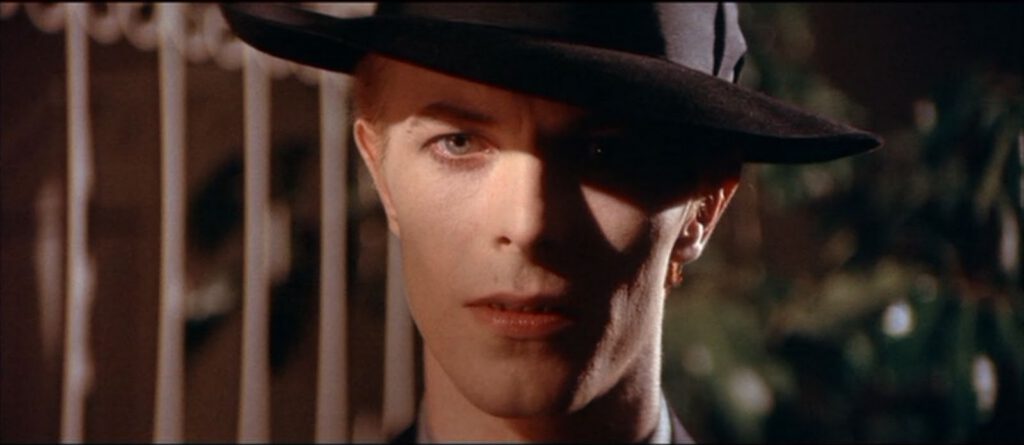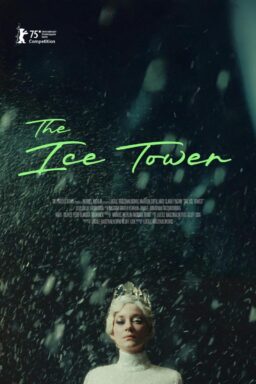The topics are flight
and shelter. On 12 February 2016, at the 66th Berlin Film Festival, cheers
erupted inside the German capital’s Friedrichstadt Palast at the surprise,
eleventh-hour announcement that Tilda Swinton would introduce a screening of “The
Man Who Fell to Earth,” which had been programmed in tribute to its
recently deceased star, David Bowie. “We’re going to watch a great film,”
Swinton said. “A masterpiece, I’d say, about a soul who leaves their home and
their family in dire circumstances and goes to a pretty hostile place, looking
for welcome and refuge. This is one of those pictures that couldn’t be more
modern.”
Swinton’s speech,
applauded at all the right intervals, came one day after another by Michael
Müller, Berlin’s mayor, in which he addressed an audience from behind his
opening-night lectern to promote Germany’s open door policy in confronting
Europe’s so-called migrant crisis. Last year, the country extended refuge to
1.1 million people fleeing wars in Syria, Iraq and Africa. Referencing the
increasingly right-wing measures adopted by neighboring nations in dealing with
the crisis, Müller remarked: “Building new walls and barbed wire, shooting at
refugees—these are messages that must never be transmitted from Germany ever,
ever again.”
“The Man Who Fell to
Earth” screened in-competition here in 1976. Bowie moved to West Berlin later
that year, hoping to kick a drug addiction that had plagued him during the
film’s production. Years later, he remarked: “I actually was feeling as
alienated as that character was. It was a pretty natural performance … I was
stoned out of my mind from beginning to end.” Bowie plays Thomas Jerome Newton,
a humanoid extra-terrestrial that arrives on Earth having seen images of it on
television back home, a desert planet suffering a terrible drought. Putting his
superior tech knowledge to use, Thomas accumulates enormous wealth through a
number of patented inventions. He aims to build a spaceship, in which he can
take water to his dying family back home.
Bowie cuts a slender,
beautiful figure—a bony-cheeked, thin-lipped creature with haunted eyes and
haunting manner. His spaced-out eccentricity marks Thomas as ambivalent,
ambiguous, alluring and dangerous. Warm on the one hand, unemotional on the
other. Shy, cold, off-kilter. Vulnerable, in a word—and as the film’s 140
minutes unfold, he falls foul of corporate capitalism and governmental
suspicion, of human hostility and greed. Life on earth is isolating,
disaffecting, harsh. Marginalized, he seeks solace in alcohol. Has there been a
white heterosexual male more exposed to “Othering’” in cinema?
Some badly dated
designs notwithstanding (Thomas’s family look like ill-received, prisoner-thin
prototypes of the Teletubbies), “Man Who Fell” is indeed a modern picture—at
least for the time being. This is not a good thing. If Nicolas Roeg’s bizarre,
sometimes exasperating fourth feature chimes with prevailing discourses, it’s a
cause less for celebration than serious concern. So long as a film whose
central allegory paints the human race as a tribe of devils is able to find
vindication in actual events, there ought to be no time for back-patting
ovations.

Roeg’s film screened
in the same week that Angela Merkel’s proposals, for other European Union
leaders to up their intake quota of refugees, were met with all manner of
opposition. George Clooney, in town for festival-opener “Hail, Caesar!” met with the German
Chancellor for an hour of professionally-photographed “talks” about the migrant
crisis. As appearances go, the boardroom chat looked to be urgent,
edge-of-settee stuff. Down-facing tumblers, unopened fizzy water, suited knees
against the hard vertices of the sleek table in the center of the room. Later,
Clooney met three Syrian families who’d been granted asylum in Berlin. Snaps of
the encounter show him, his wife, and a Syrian mother-and-daughter all sitting
abreast rather than facing one another. The proscenium might be a paparazzo’s
dream, but it’s hardly conducive to a good chat.
At any rate,
Hollywood’s handsomest awareness-raiser told press: “It was an honor to meet
three Syrian families whose lives have been shattered by war and inspiring to
learn that the people of Germany are helping them put their lives back
together.” A day earlier, at the press conference for “Hail, Caesar!”, he’d
bemoaned the time-consuming nature of filmmaking, the fact that movies can only
ever be a post-hoc medium. “The unfortunate thing about the film community is
we react to situations much more than we lead the way. Things happen, scripts
are written, and it takes a couple of years before people are actually making
films.”
All art is late to a
scene, of course, but what Clooney’s talking about is the film industry’s
institutional character, its bureaucratic procedures, its commercial criteria
when stalling, think-tanking or green-lighting projects. All of this slows
things down. A less amorphous, more systematic political outlook might lead a liberal
like Clooney to interpret this absurdly unfair industry as somehow connected
with what’s going on elsewhere.
Does he want properly
budgeted, reasonably prestigious, expertly engineered dramatic renditions of
last month’s headlines (or, indeed, tomorrow’s)? It isn’t a case of cinema
being an amateur opportunist, a storytelling form that now looks unfashionable
in light of ever-quickening streams of information. As “Hail, Caesar!” itself
shows, the medium has always been at some historical remove from real-world
events—fascinatingly and excitingly so. Long live it: this is art, not news.
None of this is to
discourage filmmakers from responding to—and intervening upon—those sensational
headlines and reactionary discourses that our mainstream media love to shape.
Indeed, Clooney might have benefited from sticking around at the Berlinale this
year to see a couple of the many non-fiction films shown here that deal with
themes of migration and the terrible human cost of territorial conflict. It
comes as no surprise to me that the more captivating and moving artistry is
generally found at present in non-fiction. Speaking crudely, documentaries tend
to be the work of smaller, more intimate crews than feature productions:
filmmakers can move faster, respond to unfolding events with more flexibility
than a cast and crew requiring assistants, trailers and green rooms.

One such filmmaker is
Gianfranco Rosi, whose “Sacro GRA” (2013) won the Golden Lion at Venice three
years ago. As far as topical films go, Rosi’s latest, “Fire at Sea,” has
so far been the standout entry in Berlin’s Official Competition. Like the earlier
work—which spent time with a motley crew of oddballs living on or near Rome’s
ring road—“Fire at Sea” unfolds in observational, fragmented scenes that are
individually direct on the one hand and somewhat obliquely connected on the
other. Its subject and setting is Lampedusa, the southernmost Italian island,
located 70 miles from Tunisia’s coast and commonly the first point of contact
for thousands of African, Asian and Middle-Eastern migrants seeking asylum in
Europe each year.
Their journey, by
boat, is extremely precarious and often fatal. Of the 400,000 migrants who have
journeyed by sea to Lampedusa in the past 20 years, 15,000 are estimated to
have died en route. Large chunks of Rosi’s film are shot aboard the rescue
vessels whose crews are tasked with finding the hopelessly primitive boats that
sink or capsize in the Mediterranean all too easily: radio dispatches, distress
calls, the sound (and sight) of a helicopter swinging into action. In addition,
the director shoots scenes on Lampedusa itself, following a likeably rough
twelve-year old local lad who whiles away his hours shooting at plants with a
homemade slingshot. Waves roar against the ziggurat cliffs of the island’s
pebbly shore. Rosi, a Tisch School of Arts graduate who was born in Eritrea in
1961 (during its war of independence), and who migrated to Italy in 1977, is a
fine, image-driven ethnographer.

The same goes for Wang Bing, whose
latest documentary “Ta’ang” focuses on several groups of people forced
to migrate, by and from Myanmar’s ongoing civil wars, across the border into
China. One hundred thousand people fled Myanmar in early 2015. Wang, a
documentarian known primarily for his epic, barely-edited portraits of China’s
industrial landscapes (“West of the Tracks” is nine hours, “Crude Oil” is
fourteen), joined some of them on their journey. His precipitous mise-en-scène
is crammed with families crouched, knees up and backsides hanging, with
bowls of rice held to their face; mud-squelching tracks traversed by
intergenerational units (baby carriers, toddlers staring into camera);
crackling, pumpkin-orange fires against the unpolluted black night.
While “Fire at Sea” is
the work of a filmmaker evidently willing to spend time perfecting his chosen
scenes (note its instances of shot/reverse shot constructions), “Ta’ang” at
times feels like the work of an unfussy (if no less committed) artist. Subjects
look directly into the camera, while rural-mountainous winds cut through the
unvarnished soundtrack. Wang’s is a different kind of intimacy to Rosi’s. Both
filmmakers value the camera’s ability to bear witness. China’s foremost
non-fiction filmmaker obviously spent a lot of time in these places—refugee
camps in Maidihe and Dayingpan, the Chaheba area along the Myanmar-China border—and
wants us to spend a lot of time there too.
Those lucky enough to
have all the time in the world can sit through this material long enough to
find deeper value in unscripted, time-passing conversations, or in an image of
someone slowly drifting into slumber by a flickering bonfire (at 148 minutes,
this one’s a breeze). We might say Wang is a master at capturing such images,
but it’s not clear if he knows what to do with them. Certainly, both this and
Rosi’s film are the kind I would have balked at a few years back: yes, arresting
images, but then what? Perhaps I’m softening—or perhaps I’m coming to terms
with the fact that cinema needn’t (or maybe even shouldn’t) seek an
all-encompassing, explicitly argued polemic. Sometimes, the narrow focus on the
experiential creates its own context.
I have no idea if
Clooney even knows who Gianfranco Rosi or Wang Bing are, but the problems that
their films deal with are universal. As one of “Ta’ang”’s subjects says: “it’s
not safe anywhere.” Was it ever? Indeed, while whataboutism does more harm than
good, there’s something faintly and predictably Eurocentric about the timing
here: why are these curatorial themes coming to prominence now? It’s as if it
takes, say, one million desperate, terrified people to seek refuge on one’s own
soil before the plight of global migrants becomes legitimate enough for
attention. At any rate, it’s all proving to be very popular: on 16 February,
the festival (whose budget this year was €23 million) revealed at its midway
point that this edition has already sold 250,000 tickets. No complaints here.











